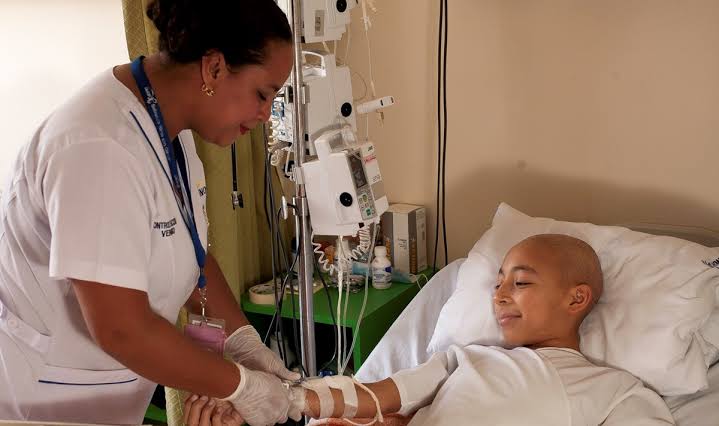Cancer is a large group of diseases that can develop in virtually any part of the body and impacts a significant number of people. It is the second leading cause of death globally, responsible for an estimated 9.6 million deaths. Among men, the most common types of cancer include lung, prostate, colorectal, stomach and liver cancer, while breast, colorectal, lung, cervical and thyroid cancer are most common among women. Approximately 1 in every 10,000 people will face a cancer diagnosis during their lifetime, making it a prevalent health issue worldwide. The burden of cancer continues to grow, placing significant physical, emotional and financial strain on individuals, families, communities and health systems. Many health systems, especially in low- and middle-income countries, are not equipped to manage this burden effectively, and large numbers of cancer patients around the world lack access to timely, quality diagnosis and treatment. In countries with strong healthcare systems, survival rates for many cancers are improving due to accessible early detection, quality treatment and survivorship care.
What is Cancer?
The human body consists of trillions of cells that grow and divide throughout a person’s life. Under normal conditions, cells reproduce only when the body needs new ones; old or damaged cells die and are replaced. Cancer occurs when this natural process is disrupted. Rather than functioning normally, some cells begin to grow uncontrollably, dividing rapidly, while damaged or abnormal cells do not die as they should. As these cancerous cells accumulate, they start to form masses or tumors that interfere with the body’s normal functions, crowding out healthy cells and making it difficult for organs to work properly.
Cancer is an incredibly complex and diverse group of diseases, with over 100 different types identified. Each type of cancer has unique characteristics in terms of growth patterns, spread and required treatments. However, cancers are broadly classified into two main categories.
Hematologic cancers or blood cancers, originate in blood cells and include conditions such as leukemia, lymphoma and multiple myeloma. These cancers generally do not form solid tumors but instead affect the function and production of healthy blood cells, leading to complications within the blood and lymphatic systems.
On the other hand, solid tumor cancers arise in the body’s organs and tissues, creating masses or lumps known as tumors. Solid tumors can occur in various parts of the body, including the breast, prostate, lung, and colon. Common examples include breast, prostate, lung, and colorectal cancers. Each type of cancer is typically named based on where it originates. For instance, breast cancer begins in breast cells and retains that name even if it spreads, or metastasizes, to other parts of the body.
What causes cancer?
Cancer cells develop because of multiple changes in their genes. These changes can have many possible causes. Lifestyle habits, genes you get from your parents, and being exposed to cancer-causing agents in the environment can all play a role. Many times, there is no obvious cause of cancer, as it can result from a combination of genetic predispositions and environmental influences.
For many individuals, cancer can be treated effectively, particularly when detected in the early stages. Advances in medical research, treatment options and early detection methods have led to better outcomes for people diagnosed with various types of cancer. Treatments may involve surgery, chemotherapy, radiation, immunotherapy and targeted therapies, depending on the type and stage of cancer. Consequently, many people now live full and productive lives after cancer treatment, with survival rates steadily improving for many types of cancer.
Recent data shows that cancer diagnoses are increasingly affecting younger adults, with a noticeable rise in cases among people under 50. A recent study estimated that by 2030, the number of early-onset cancer cases could increase by about 30% worldwide. Additionally, the study projected that cancer-related deaths in this age group could also rise by around 20%, underscoring the need for greater awareness, early detection and targeted prevention efforts. This shift in cancer trends may result from various factors, including lifestyle changes, environmental exposures and improved diagnostic tools that facilitate earlier detection. It also emphasizes the importance of public health initiatives to promote cancer awareness and preventive measures.
While cancer remains a serious health issue affecting millions worldwide, advancements in treatments and a growing focus on early detection are helping many people manage the disease more effectively. Nonetheless, rising cancer rates among younger populations remind us of the need for ongoing awareness, research and preventive healthcare practices.
